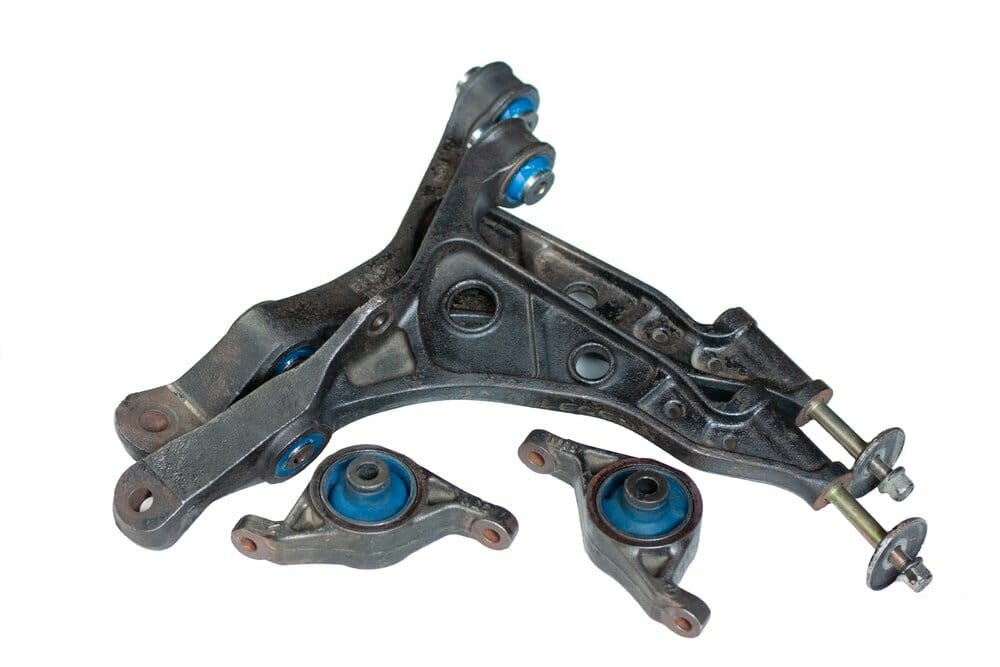What Are The Symptoms Of Bad Motor Mounts

Motor mounts, sometimes referred to as engine mounts, are critical components in a vehicle's powertrain. Their primary function is to isolate the engine and transmission vibrations from the chassis, thereby reducing noise, vibration, and harshness (NVH) felt by the occupants. Diagnosing failing motor mounts early can prevent more significant damage and maintain a comfortable driving experience.
Identifying the Symptoms
Several telltale signs can indicate failing or worn motor mounts. Understanding these symptoms is crucial for accurate diagnosis and timely replacement.
- Excessive Vibration: This is often the first and most noticeable symptom. The vibration is typically felt in the steering wheel, seats, and floorboard, especially during idle or acceleration. The intensity of the vibration may increase with engine RPM.
- Clunking Noises: A worn mount can allow the engine to shift excessively during acceleration, deceleration, or gear changes. This movement can result in a distinct "clunking" or "thudding" noise, particularly when shifting between drive and reverse.
- Engine Movement: Observing the engine while someone revs the engine (while stationary and in park or neutral with the parking brake engaged) can reveal excessive engine movement. A healthy engine will exhibit minimal movement, while a failing mount will allow the engine to rock back and forth considerably. Safety precautions are paramount during this test.
- Visual Inspection: A direct visual inspection of the motor mounts can reveal cracks, tears, or complete separation of the rubber or polyurethane dampening material. Oil or fluid leaking from hydraulic mounts is another indicator of failure.
- Difficulty Shifting: Worn mounts can misalign the linkage between the shifter and the transmission, making it difficult to shift gears smoothly. This is particularly noticeable in manual transmission vehicles.
- Damaged Hoses and Wires: Excessive engine movement due to bad mounts can stress and eventually damage surrounding components such as hoses, wires, and exhaust pipes. Keep an eye on these connections during visual inspection.
Engineering Choices and Alternatives
Motor mounts are not a one-size-fits-all component. Engineers choose mount designs based on vehicle weight, engine power, and desired NVH levels. Common types include:
- Solid Rubber Mounts: These are the simplest and most common type, offering a balance between cost, durability, and vibration damping. However, they are prone to cracking and hardening over time, leading to increased vibration.
- Hydraulic Mounts: These mounts contain fluid-filled chambers that provide superior vibration damping compared to solid rubber mounts. They are more complex and expensive but offer better NVH control. A common engineering challenge is ensuring leak-proof seals and consistent fluid viscosity across temperature ranges.
- Electronic/Active Mounts: These are the most sophisticated type, utilizing sensors and actuators to actively adjust damping characteristics based on driving conditions. They offer the best NVH performance but are also the most expensive and complex. Failure of the electronic components can lead to erratic performance and diagnostic headaches.
- Polyurethane Mounts: Often used in performance applications, polyurethane mounts are stiffer than rubber mounts, providing improved engine control and reduced wheel hop. However, they transmit more vibration into the cabin, making them less suitable for daily driving.
Pros and Cons of Each Type
Solid Rubber Mounts:
Pros: Inexpensive, durable, readily available.
Cons: Prone to cracking and hardening, less effective vibration damping than hydraulic or electronic mounts.
Hydraulic Mounts:
Pros: Superior vibration damping, comfortable ride.
Cons: More expensive, prone to leaks, more complex to replace.
Electronic/Active Mounts:
Pros: Best vibration damping, adaptable to driving conditions.
Cons: Most expensive, complex electronics, potential for electronic failures.
Polyurethane Mounts:
Pros: Improved engine control, reduced wheel hop, increased durability in high-performance applications.
Cons: Increased vibration and noise, less comfortable ride, not suitable for daily driving.
Reliability Aspects and Maintenance Tips
The lifespan of motor mounts varies depending on driving conditions, vehicle type, and mount design. Generally, they can last anywhere from 50,000 to 100,000 miles. Regular inspections can help identify problems early.
- Inspect regularly: Visually inspect the mounts for cracks, tears, or leaks during routine maintenance.
- Replace in pairs: When replacing one motor mount, it's generally recommended to replace the other(s) on the same axle to ensure even support and prevent premature failure of the new mount.
- Use quality parts: Opt for reputable brands that offer durable and reliable motor mounts. Aftermarket parts can vary significantly in quality.
- Torque to specification: When installing new mounts, ensure that all bolts are torqued to the manufacturer's specifications to prevent premature failure and maintain proper alignment.
Future Trends
The automotive industry is moving towards lighter, more efficient vehicles. This trend is influencing the design of motor mounts. Expect to see increased use of:
- Advanced Materials: Composites and lightweight alloys will be used to reduce mount weight without sacrificing strength or vibration damping.
- Smart Mounts: Enhanced sensor technology and sophisticated control algorithms will allow for more precise and adaptable vibration damping.
- Integrated Designs: Motor mounts may be integrated with other chassis components to reduce weight and improve packaging efficiency.
- Predictive Maintenance: Embedded sensors will monitor mount condition and predict potential failures, enabling proactive maintenance and reducing downtime.
The rise of electric vehicles (EVs) presents a new challenge. While EVs lack a traditional internal combustion engine, they still require motor mounts to isolate vibrations from the electric motor and other components. The focus will shift towards minimizing noise and vibration from the electric drivetrain, leading to the development of specialized EV motor mounts.
Conclusion
Diagnosing and addressing bad motor mounts is essential for maintaining vehicle performance, comfort, and safety. By understanding the symptoms, engineering choices, and future trends, automotive professionals can effectively diagnose and repair motor mount issues, ensuring a smooth and reliable driving experience for their customers. As the automotive industry evolves, advancements in materials, technology, and design will continue to shape the future of motor mount technology, enhancing vehicle performance and reducing NVH.
